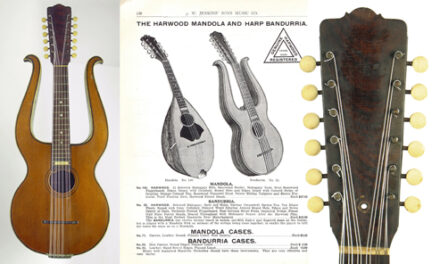The hardest part about these blogs is how to make the titles remotely interesting while still introductory. This is perhaps my poorest attempt yet.

It refers to the next in our list of recently discovered inventions of pitch-changing devices specifically for harp guitars – Patent #766,339, granted in 1904 to one Charles Funk of Missouri. I showed this one briefly at HGG6, having then just received it from fellow researcher Paul Fox, and it’s now up on the Patents page. In this case, the patent covers only the device; it could theoretically be applied to any harp guitar with the appropriate second neck (Note how poorly Funk drew his sample harp guitar…including 8 frets-to-the-body, and what’s up with that curved nut?!).

The invention is actually pretty simple (for a machinist) and even has potential. Funk’s mechanism consists of a small tapered “slider” in position behind the neck for each bass string. This piece is positioned in a second, spring-loaded component that hooks the string. When the slide is pushed up, it forces the hook to draw the string back against a second “fret” (nut), thus sharping the note one semitone. Assuming these could be calibrated for the string gauges and could hold securely in place (Fig 5 seems to show some locking mechanism), it would seem to me to be as feasible – perhaps even simpler – than the mechanism of the Dital harp, which is otherwise similar in concept and result.

Funk created it to quickly set sharps for all the different keys. Though this would require only 7 strings, he shows 9 in his drawing.
What I want is a device this simple, but with a way to reach them with my thumb while fretting the neck.
C’mon, builders – Funk’s gotten you halfway there!





